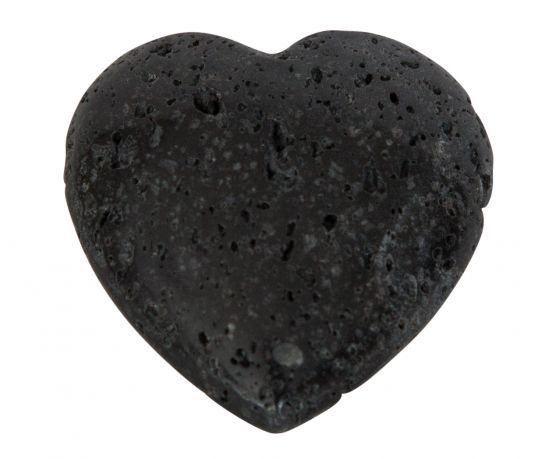We use cookies to make your experience better.
25mm Lava stone heart from Italy beautiful heart that is cut entirely by hand.
- Buy 10 for €1.99 each and save 20%
The heart is a very old symbol of love used by everyone around the world. Traditionally, the heart has been chosen in several cultures as the seat of love and feeling. It is not entirely clear why the heart was chosen as a love symbol. Perhaps because the heart is automatically related to the (feeling) life and without the heart (read love) no life is possible. The heartbeat is partly influenced by feelings; so our hearts beat faster when in love. The heart likes to be loved. The heart needs love. It has even been claimed that love extends life expectancy, while loneliness is counterproductive. Everyone knows the phrase, "He died of a broken heart."
Lava is rock in liquid form. After magma reaches the earth's surface or the sea floor, it is called lava. Due to differences in magma composition, flow rate, temperature and chemical, mineralogical composition, there are several types of lava, each with its own behavior and characterized by a porous structure. Lava can have a destructive effect, but at the same time it also has a creative effect. For example, new land can be formed by lava, for example the Hawaiian Islands in the Pacific Ocean have been created. Furthermore, cooled lava -after several centuries of weathering- is very fertile and can therefore be used well as agricultural land. The word 'lava' originates from the Italian language, and is probably derived from the Latin word labes, which means the sliding or sliding of the lava. The word was first used in its present sense by Francesco Serao, professor of medicine at the University of Naples, when describing the eruption of Mount Vesuvius from May 14 to June 4, 1737. Serao believed that lava was a mixture of sand and soil that had been melted by the heat of the volcanic fire. He described "a flow of fiery lava" compared to the water and mud that run off the volcano after heavy rain. Cooling viscous lava often accumulates in a volcanic shaft. Due to this blockage and the presence of gases in the lava, the pressure is built up in the shaft. Eventually, an eruption takes place creating large clouds of volcanic ash and gas, as well as pyroclastic flows. The most explosive eruptions are followed by a quieter period of lava being ejected. When the lava is rich in silica, a slow-growing lava dome is formed, a large cushion-like structure full of cracks and crevices. The top and edges of a lava dome are usually covered with stone fragments, breccia and ash. The hardened rock that arises from lava is called effluent rock. The appearance and composition of different effluent rocks varies widely. When a rhyolite lava flow cools quickly, it can become obsidian. However, if it is filled with gas bubbles, it can also turn into pumice stone. When the same lava cools slowly, it becomes a light-colored solid rock that is simply called rhyolite.












